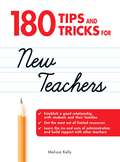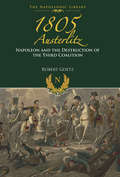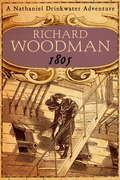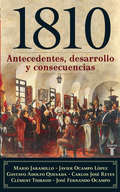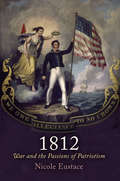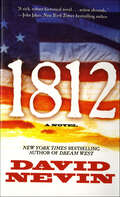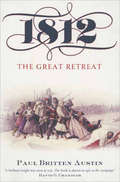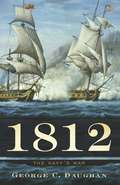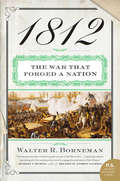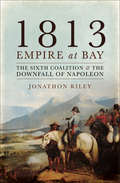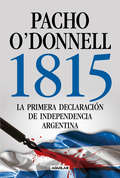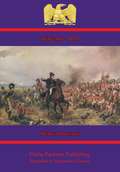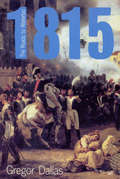- Table View
- List View
180 Tips and Tricks for New Teachers
by Melissa KellyLooking for ways to fix your novel? Or: Is your fiction writing in peril?Based on real advice gleaned from thousands of writing critiques, 179 Ways to Save a Novel is more than a collection of ideas for troubleshooting your work-in-progress (though it holds plenty of practical writing advice). This inspiring guide doubles as a thoughtful examination of the writing life-and not just with respect to writing, but to the reading habits and thought processes of writers.The 179 meditations in this book are grouped under six headings:SubstanceStructureStyleSymbol, Myth & MetaphorSouland Other MattersDip into the book at random when in need of nonspecific advice, inspiration, or criticism. Or read it straight through for a deeper examination of the writing life. However you encounter them, these meditations are guaranteed to challenge, inspire, provoke-and occasionally to tickle or annoy. But most of all they'll awaken a deeper awareness of the fiction writer's many challenges and thorny choices.
180 segundos
by Jessica ParkAlgunas personas se pasan toda la vida sin cambiar de perspectiva. Para Allison sólo bastarán 180 segundos... Las redes sociales y la popularidad a veces ayudan a quien menos se lo espera, ¿pero será tan fácil? 180 SEGUNDOS pueden propiciar un beso trascendental que te lleve a las nubes, incluso regalarte muchos amigos, pero tu nueva y maravillosa vida es capaz de propinarte el revés más cruel. Tras una dura infancia viviendo de aquí para allá en hogares temporales, Allison mantiene su distancia, no se le da la vida social. Le cuesta mucho hacer amigos y prefiere la seguridad de su cuarto, pues sabe mejor que nadie que las cosas no duran mucho tiempo. Pero ya en la universidad cada vez le es más difícil aislarse en sus audífonos. Una tarde cualquiera se ve enganchada en un experimento social en las afueras del campus. De repente ya está frente a una multitud, forzada a interactuar con un completo extraño durante 180 segundos. Ni Allison ni Esben Baylor, el chico estrella de las redes sociales sentado justo frente a ella, están preparados para lo que va a pasar. Cuando se acaba el tiempo, la intensidad de la experiencia los abruma a ambos, los electriza. Con un empujoncito de su mejor amiga, Allison se embarca en una aventura para averiguar si lo que Esben y ella compartieron es real y si por fin podrá confiar en sí misma, en los demás y en el amor. ¿Cómo lograr ser valiente si siempre has levantado muros emocionales a tu alrededor? ¿Y si el mundo te hace una mala broma y alguien que amas levanta sus propios muros contigo?
1800 Mechanical Movements, Devices and Appliances
by Gardner D. HiscoxA fascinating compendium of early-twentieth-century mechanical devices, this wide-ranging work covers a variety of applications. More than 1,800 engravings—ranging from simple diagrams to detailed cross-sections—illustrate the workings of each item, from simple hooks and levers to complex machinery used in steam, motive, hydraulic, air, and electric power, navigation, gearing, clocks, mining, construction, and more.Compiled as a ready reference for inventors, students of mechanics, artisans, and other workers, this volume features only minimal text. Its true value lies in its wealth of illustrated information, offering the quickest and most satisfactory method of conveying the exact conditions of mechanical action and construction.
1801 Home Remedies
by Editors at Reader's Digest"This is the kind of practical knowledge that comes in handy all the time."<P> Doctor-approved treatments for everyday health problems, including coconut oil to relive sore gums, catnip to soothe anxiety, tennis balls to stop snoring, and vitamin C to prevent ulcers.<P> The 100-plus health conditions that were selected for this book are absolutely appropriate for you and your family members to treat with home remedies, either by themselves or alongside conventional medical treatment. They focus on things that are practical, convenient, and ultimately doable.
1805 Austerlitz: Napoleon and the Destruction of the Third Coalition
by Robert GoetzThe Battle of Austerlitz is almost universally regarded as the most impressive of Napoleons many victories. The magnitude of the French achievement against a larger army was unprecedented, the great victory being met by sheer amazement and delirium in Paris, where just days earlier the nation had been teetering on the brink of financial collapse. In this insightful study, the author analyses the planning of the opposing forces and details the course of the battle hour by hour, describing the fierce see-saw battle around Sokolnitz, the epic struggle for the Pratzen Heights, the dramatic engagement between the legendary Lannes and Bagration in the north, and the widely misunderstood clash of Napoleons Imperial Guard and Alexanders Imperial Leib-Guard. The author has produced a detailed and balanced assessment of the battle that for the first time places familiar French accounts in their proper perspective and exposes many myths regarding the battle that have been perpetuated and even embellished in recent books. With 1805: Austerlitz, the reader is left with a thorough appreciation of Napoleon and his Grande Armée of 1805, an army that decisively defeated not a hapless relic of the ancien regime but rather a formidable professional army that had fought the French armies on equal terms five years earlier.
1805: Number 6 in series (Nathaniel Drinkwater #6)
by Richard WoodmanIt is the summer of 1804 and Napoleon is massing his vast army for the invasion of England. Nathaniel Drinkwater has command of HMS Antigone, and he and his men are sent to patrol the Channel coast, helping the Royal Navy maintain a blockade of the enemy's ports. As Nelson's and Napoleon's mighty fleets draw closer to one another, Drinkwater is unprepared for the role that destiny deals him when he becomes a prisoner of the French and suddenly finds himself on the wrong side of the British bombardment.
180° South
by Jeff Johnson Yvon Chouinard Doug Tompkins Chris Malloy180° South takes readers behind the scenes of the film, 180° South, made by Chris Malloy, to learn more about the people who made the original overland journey to Patagonia in 1968, and the repeat journey over ocean and land 40 years later. The book includes stories of events and experiences that inspired Chris Malloy, Yvon Chouinard, and Doug Tompkins to choose paths committed to saving what's left of the wild world. Open it anywhere and enjoy the photographs by the world's leading surf and climbing photographers Jeff Johnson, Jimmy Chin, Scotty Soen, and Danny Moder.
1810, antecedentes, desarrollo y consecuencias
by Javier Ocampo Lopez Gustavo Adolfo Quesada Mario FernandoSeis ensayos sobre la historia en Colombia. <P><P>Este libro recoge seis ensayos inéditos, escritos desde diferentesperspectivas analíticas, sobre los antecedentes, el desarrollo y lasrepercusiones de una fecha crucial en la historia de Colombia y demuchos otros países de América Latina. <P>Sus páginas abarcan el contextoeuropeo que enmarcó el colapso del imperio colonial español, el contextoamericano en que tuvo lugar la lucha por la independencia, los aspectossociales de la guerra propiamente dicha y las interpretacioneshistóricas que han tratado de explicar la brecha entre los sueños y larealidad, entre las realizaciones y las frustraciones de una serie deacontecimientos que hace doscientos años cambiaron para siempre el mapapolítico del mundo. <P> Se trata de una obra polémica, desde luego, pero quesin duda alguna aporta valiosos elementos de juicio para entender porqué, cómo y a qué precio nacieron las repúblicas americanas.
1812
by Nicole EustaceAs military campaigns go, the War of 1812 was a disaster. By the time it ended in 1815, Washington, D.C., had been burned to the ground, the national debt had nearly tripled, and territorial gains were negligible. Yet the war gained so much popular support that it ushered in what is known as the "era of good feelings," a period of relative partisan harmony and strengthened national identity. Historian Nicole Eustace's cultural history of the war tells the story of how an expensive, unproductive campaign won over a young nation--largely by appealing to the heart.1812 looks at the way each major event of the war became an opportunity to capture the American imagination: from the first attempt at invading Canada, intended as the grand opening of the war; to the battle of Lake Erie, where Oliver Perry hoisted the flag famously inscribed with "Don't Give Up the Ship"; to the burning of the Capitol by the British. Presidential speeches and political cartoons, tavern songs and treatises appealed to the emotions, painting war as an adventure that could expand the land and improve opportunities for American families. The general population, mostly shielded from the worst elements of the war, could imagine themselves participants in a great national movement without much sacrifice. Bolstered with compelling images of heroic fighting men and the loyal women who bore children for the nation, war supporters played on romantic notions of familial love to espouse population expansion and territorial aggression while maintaining limitations on citizenship. 1812 demonstrates the significance of this conflict in American history: the war that inspired "The Star-Spangled Banner" laid the groundwork for a patriotism that still reverberates today.
1812: A Novel (The American Story)
by David NevinFrom the New York Times bestselling author David Nevin comes an atonishing historical novel of the War of 1812The war of 1812 would either make America a global power sweeping all the way to the Pacific--or break it into small pieces bound to mighty England. It was a second revolution of sorts to prove to the British that America had to be taken seriously. The principal actors in this drama were James and Dolley Madison, and Andrew and Rachel Jackson. Their courage and determination would shape America's destiny.At the Publisher's request, this title is being sold without Digital Rights Management Software (DRM) applied.
1812: The Great Retreat
by Paul Britten Austin1812: The Great Retreat the third and final volume in Austins magisterial trilogy concludes the story of one of history's most disastrous campaigns. The author's previous books brought the Grand Army to the head-on battle at Malo-Jaroslavetz after withdrawing sixty miles from the burnt down capital, and for the first time in his meteoric career Napoleon had to order a retreat. This volume follows the army's withdrawal through 800 miles of devastated countryside, crossing the horrific relics of the Borodino battlefield, fighting its way through the Russian General Kutusov's successive attempts to cut it off, and winning, against overwhelming odds, the three-day battle of the Berezina crossing. First-hand narratives, many published in English for the first time, describe Marshal Ney's astounding achievement in holding together the rear-guard until he himself, musket in hand, was the last man to re-cross the Niemen into Poland.Using the words of the participants themselves, Paul Britten Austin brings unparalleled authenticity and immediacy to his unique account of the closing stages of Napoleon's dramatic and tragic 1812 campaign.
1812: The March On Moscow
by Paul Britten AustinThis account of Napoleon&’s disastrous invasion of Russia, in the words of those who experienced it, offers &“a brilliant insight into men at war&” (David G. Chandler, author of The Campaigns of Napoleon). Hundreds of thousands of men set out on that midsummer day of 1812. None could have imagined the terrors and hardships to come. They&’d been lured all the way to Moscow without having achieved the decisive battle Napoleon sought—and by the time they reached the city, their numbers had already dwindled by more than a third. One of the greatest disasters in military history was in the making. The fruit of more than twenty years of research, this superbly crafted work skillfully blends the memoirs and diaries of more than a hundred eyewitnesses, all of whom took part in the Grand Army&’s doomed march on Moscow, to reveal the inside story of this landmark military campaign. The result is a uniquely authentic account in which the reader sees and experiences the campaign through the eyes of participants in enthralling day-by-day, sometimes hour-by-hour detail.
1812: The Navy's War
by George C. DaughanAt the outbreak of the War of 1812, America’s prospects looked dismal. It was clear that the primary battlefield would be the open ocean-but America’s war fleet, only twenty ships strong, faced a practiced British navy of more than a thousand men-of-war. Still, through a combination of nautical deftness and sheer bravado, the American navy managed to take the fight to the British and turn the tide of the war: on the Great Lakes, in the Atlantic, and even in the eastern Pacific. In 1812: The Navy’s War, prizewinning historian George C. Daughan tells the thrilling story of how a handful of heroic captains and their stalwart crews overcame spectacular odds to lead the country to victory against the world’s greatest imperial power. A stunning contribution to military and national history, 1812: The Navy’s War is the first complete account in more than a century of how the U. S. Navy rescued the fledgling nation and secured America’s future.
1812: The Rivers of War
by Eric FlintEric Flint's acclaimed 1634: The Galileo Affair was a national bestseller from one of the most talked-about voices in his field. Now, in this extraordinary new alternate history, Flint begins a dramatic saga of the North American continent at a dire turning point, forging its identity and its future in the face of revolt from within, and attack from without. In the War of 1812, U. S. troops are battling the British on the Canadian border, even as a fierce fight is being waged against the Creek followers of the Indian leader Tecumseh and his brother, known as The Prophet. In Europe, Napoleon Bonaparte's war has become a losing proposition, and the British are only months away from unleashing a frightening assault on Washington itself. Fateful choices are being made in the corridors of power and on the American frontier. As Andrew Jackson, backed by Cherokee warriors, leads a fierce attack on the Creek tribes, his young republic will soon need every citizen soldier it can find. What if-at this critical moment-bonds were forged between men of different races and tribes? What if the Cherokee clans were able to muster an integrated front, and the U. S. government faced a united Indian nation bolstered by escaping slaves, freed men of color, and even influential white allies? Through the remarkable adventures of men who were really there-men of mixed race, mixed emotions, and a singular purpose-The Rivers of War carries us in this new direction, brilliantly transforming an extraordinary chapter of American history. With a cast of unforgettable characters-from James Monroe and James Madison to Sam Houston, Francis Scott Key, and Cherokee chiefs John Ross and Major Ridge-The Rivers of War travels from the battle of Horseshoe Bend to the battle of New Orleans, and brings every explosive moment to life. With exquisite attention to detail, an extraordinary grasp of history, and a storyteller's gift for the dramatic, Flint delivers a bold, thought-provoking epic of enemies and allies, traitors and revolutionaries, and illuminates who we are as a nation, how we got here, and how history itself is made-and remade.
1812: The War of 1812 (P. S. Series)
by Walter R. BornemanIn June 1812 the still-infant United States had the audacity to declare war on the British Empire. Fought between creaking sailing ships and armies often led by bumbling generals, the ensuing conflict featured a tit-for-tat "You burned our capital, so we'll burn yours" and a legendary battle unknowingly fought after the signing of a peace treaty. During the course of the war, the young American navy proved its mettle as the USS Constitution, "Old Ironsides," sent two first-rate British frigates to the bottom, and a twenty-seven-year-old lieutenant named Oliver Hazard Perry hoisted a flag exhorting, "Don't Give Up the Ship," and chased the British from Lake Erie. By 1814, however, the United States was no longer fighting for free trade, sailors' rights, and as much of Canada as it could grab, but for its very existence as a nation. With Washington in flames, only a valiant defense at Fort McHenry saved Baltimore from a similar fate. Here are the stories of commanding generals such as America's Henry "Granny" Dearborn, double-dealing James Wilkinson, and feisty Andrew Jackson, as well as Great Britain's gallant Sir Isaac Brock, overly cautious Sir George Prevost, and Rear Admiral George Cockburn, the man who put the torch to Washington. Here too are those inadvertently caught up in the war, from heroine farm wife Laura Secord, whom some call Canada's Paul Revere, to country doctor William Beanes, whose capture set the stage for Francis Scott Key to write "The Star-Spangled Banner." 1812: The War That Forged a Nation presents a sweeping narrative that emphasizes the struggle's importance to America's coming-of-age as a nation. Though frequently overlooked between the American Revolution and the Civil War, the War of 1812 did indeed span half a continent -- from Mackinac Island to New Orleans, and Lake Champlain to Horseshoe Bend -- and it paved the way for the conquest of the other half. During the War of 1812, the United States cast aside its cloak of colonial adolescence and -- with both humiliating and glorious moments -- found the fire that was to forge a nation.
1813: The Sixth Coalition & the Downfall of Napoleon
by Jonathon RileyA distinguished historian and British Army veteran examines the political and military alliances that led to the defeat of France in the Napoleonic Wars. 1813 was a critical year in the war that ended with the downfall of Napoleon—the year in which the balance of power tipped decisively against the French monarch&’s First Empire. In 1813: Empire at Bay, military historian and retired British Army Lt. Gen. Jonathon Riley explores the international alliance behind the major campaigns that raged across Europe and ultimately broke France&’s power. Focusing on the nations of the Sixth Coalition—Austria, Prussia, Russia, the United Kingdom, Portugal, Sweden, Spain, and the smaller German states—Riley reveals how this unprecedented alliance became the prototype of all uneasy modern coalitions. Despite their common enemy and shared goals, the international leaders and military officers had to navigate troubled command relationships, disagreements on strategy and operations, and clashing political ambitions. Riley also reassesses Napoleon&’s strengths and faults as an alliance commander, overseeing armies of not only Frenchmen but also Poles, Danes, Italians, Germans, and a host of other contingents. In vivid detail, Riley&’s groundbreaking book covers the battles of Lützen, Bautzen, Dresden, and Leipzig, demonstrating how they were each in their own way a decisive step toward Napoleon&’s defeat at Waterloo.
1815
by Pacho O'Donnell1815. La primera declaración de independencia argentina es un revelador estudio de los años posteriores a la Revolución de Mayo, anclado en los hechos determinantes a ambas márgenes del Río de la Plata, Buenos Aires, el Litoral y la Banda Oriental.El análisis se centra en las cambiantes y tumultuosas relaciones entre Artigas y la sucesión de autoridades porteñas, la Junta ampliada, la Asamblea del Año XIII, los Triunviratos, los Directorios.Derrotado Napoleón, repuesto Fernando VII en el trono, bajo la amenaza de una poderosa expedición que partiría de España para recuperar el virreinato y las permanentes incursiones de portugueses y brasileños sobre territorios de las Provincias Unidas supervisadas por Gran Bretaña, en medio de tanto caos y peligros, la recién estrenada revolución comenzaba a delinear dos modelos de país: uno cauto y centralista que defendía la exclusividad de la renta portuaria y los intereses de las elites económicas e ilustradas; y otro que concebía la independencia como un recambio de cúpulas, de españolas a criollas, la cesión de algunos derechos para el pueblo, sin el pueblo, una independencia relativa, negociada y amparada por las potencias.El 29 de junio de 1815, en Concepción del Uruguay, convocados por Artigas, casi exactamente un año antes que en Tucumán, los Pueblos Libres declararon la independencia bajo un régimen constitucional democrático que garantizaba el voto popular, la reforma agraria, la libertad de culto y el federalismo.Las actas del congreso se han perdido o fueron destruidas. Durante doscientos años la historiografía oficial ha negado aquel hecho crucial, protagonizado por el enemigo, el traidor Artigas y los gobernadores federales. Sin embargo, no existe el crimen perfecto: quedan rastros, indicios, evidencias, cartas y documentos que permiten reconstruir lo que la historia ha ocultado.En 1815. La primera declaración de independencia argentina, Pacho O'Donnell comienza a levantar el velo.
1815 — Waterloo [Illustrated Edition]
by Henry Houssaye S. R. WillisThis ebook is purpose built and is proof-read and re-type set from the original to provide an outstanding experience of reflowing text for an ebook reader. Waterloo Illustration Pack - 14 maps/battle plans, 18 portraits of the personalities engaged, 10 illustrations. Houssaye's history of the 1815 campaign stands out as perhaps the most complete and least biased French account of the campaign that culminated in the downfall of Napoleon. Filled with detail from numerous French sources and written in a light style, it provides a complete look at the campaign whilst keeping the narrative to a reasonable length. There is also an occasional flash of wit - usually missing from French accounts, substituted instead with accusation and counter accusation - which makes the book a real joy to read. For example, speaking of Grouchy on the morning of the 18th "Grouchy was eating some strawberries (to eat strawberries is not, moreover, a hanging matter, even on a morning of battle),..." Henry Houssaye, an esteemed member of the French Institute, wrote a number of works on the Napoleonic period (mainly of the later years of Napoleon), amongst them plays and ancient history. Title - 1815 -- Waterloo Author -- Henry Houssaye (1848-1911) Translation -- S. R. Willis (????-????) Text taken, whole and complete, from the edition published in 1905, Kansas, by Franklin Hudson Publishing Co. Original - 268 pages. Illustrations - The original map cannot be provided with this edition due to its A3 size - We have added our Waterloo Illustration pack to ensure that the reader can follow the text.
1815: The Return of Napoleon (The\napoleonic Library)
by Paul Britten AustinThe dramatic story of Napoleon&’s escape from Elba and march on Paris—in the words of eyewitnesses and participants. Drawing on hundreds of firsthand accounts by Napoleon&’s supporters and opponents, Paul Britten Austin recreates the drama of those tumultuous days of the spring of 1815 and throws light on the mixed French response to the unexpected return of their former emperor. 1815: The Return of Napoleon recreates, in the words of those present, Napoleon&’s dramatic landing at Antibes in the south of France; the first heady days of his arrival after almost a year of exile; his almost miraculous march across France; his arrival in Paris; and the coup which led to the fall of the Bourbons. Paul Britten Austin, author of an acclaimed trilogy on Napoleon&’s invasion of Russia, brings historical events to life and gives a dramatic insight into the hopes and fears of the French nation in that spring of 1815.
1815: The Roads to Waterloo
by Gregor DallasThe seventeen months from April 1814 to August 1815 were an extraordinary period in European history; a period which saw two sieges of Paris, a complete revision of Europe's political frontiers, an international Congress set up in Vienna, civil war in Italy and international war in Belgium.Gregor Dallas tells the story of these days through the perspectives of three very different European cities: the great metropolis of London, post-revolutionary Paris and baroque Vienna. The writing is almost cinematic in its power to evoke and bring to life the Europe of Tolstoy: the ebb and flow of power, of armies and of peoples across Europe's northern plains. Working essentially from primary sources, Dallas is as interested in the weather conditions before battle as in the way cartoonists reacted to court intrigues and fashions.It is also Europe seen through the eyes of its central players: Talleyrand, who has served nearly every French regime since the Revolution of 1789; Metternich, who devises new plans for a 'Germany' that does not yet exist and for a 'Europe' that remains devided; Wellington, who reveals himself a diplomat as well as a soldier; Tsar Alexander, an idealist seeking to impose a uniform plan for all Europe; and 'Boney' himself, who has his own ideal of Europe and, though banished to Elba, does not abandon his dream to realise it.
